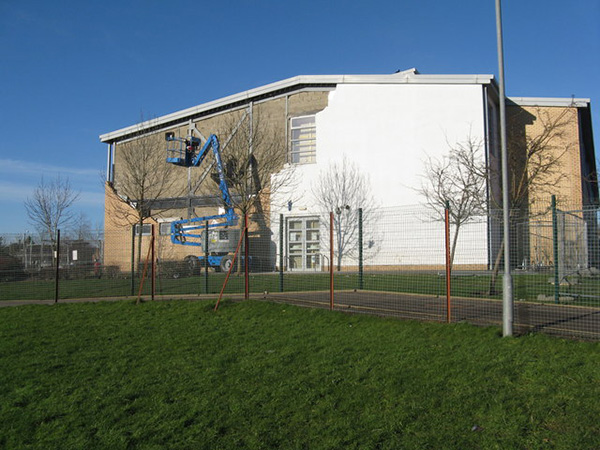Soft landings - helping clients lead contractors
Many people will have seen the news (2016) about the Edinburgh PFI schools with structural failures. We shouldn’t still be constructing buildings with feeble brickwork. We have Victorian and Edwardian schools that have been standing for over 100 years without these problems. More ironically, we have 1960s CLASP schools – built on a budget with the flimsiest of constructions – still standing and performing their role well after their sell-by date. They’re usually freezing in winter and boiling in summer, with asbestos in places a power drill shouldn’t reach, but at least they’re still standing.
The reasons for these high-profile failures are easy to park at the door of the PFI process. One can blame cost-cutting, absence of site inspections, and lack of quality control. Some even say that the ceding of Building Control checks to the design and build contractor is a root cause: site labour can’t be trusted to mark their own exam paper when their primary interest is to finish on time and under budget.
Some commentators blame the design process, and bemoan the loss of the Building Schools for the Future programme when design quality was overseen by the Commission for Architecture in the Built Environment (CABE). The erstwhile CABE may have tried to be a force for good, but project lead times become ridiculously long and expensive. And would it have prevented structural failures? Hardly likely.
The one cause of these failures that doesn’t get enough press coverage is client leadership and quality championing. It can be argued that clients get what clients are willing to pay for, and there’s no industry like the construction industry for delivering something on the cheap.
The cost-cutting, the emphasis on time and cost at the expense of quality control – all this can be pinned on a client base that does not lead, demand, oversee, and articulate what it wants well enough to prevent the desired product being delivered at the wrong level of quality at the wrong price.
Which means that clients have to:
- Get wiser on what can go wrong.
- Get smarter with their project management.
- Articulate what they want in terms of performance outcomes.
Truly professional designers recognise this, and are prepared to guide their clients through the shark-infested waters of writing their employers requirements. But once that is done the client’s job is not over. They can’t simply hand it over to the main contractor and turn their back until the job is complete. They need to be closely involved every step of the way – and keep key parties involved beyond practical completion and into the all-important aftercare phase.
Soft Landings provides a chassis on which focus on performance outcomes can be built. The chassis provides the client with a driving seat to ensure that standards are maintained, along with a shared construction team responsibility to make sure the building is fit for purpose.
To find out about BSRIA's Soft Landings conference, see 2016 Soft Landings Conference.
This article was originally published as Contractors can’t build well without clients that lead by BSRIA on 18 May 2016. Written by Roderic Bunn.
--BSRIA
[edit] Related articles on Designing Buildings Wiki
- 2020 Soft Landings Conference.
- Articles by BSRIA on Designing Buildings Wiki.
- Better Buildings Partnership.
- BSRIA Soft Landings Awards.
- BSRIA Soft Landings 2019 award winners.
- Building performance evaluation.
- Client commissioning.
- Extended aftercare.
- Government construction strategy.
- Handover to client.
- Maintenance.
- Medical Research Council Laboratory of Molecular Biology soft landings project.
- Migration strategy.
- Performance in use.
- Post occupancy evaluation.
- Post project review.
- Snagging.
- Soft landings.
- Soft Landings & Government Soft Landings, A Convergence Guide for Construction Projects.
- Soft Landings for owners.
- Soft Landings for refurbishment projects.
- Success criteria for soft landings projects.
- University of East Anglia - case study.
Featured articles and news
CIOB report; a blueprint for SDGs and the built environment
Pairing the Sustainable Development Goals with projects.
Latest Build UK Building Safety Regime explainer published
Key elements in one short, now updated document.
UKGBC launch the UK Climate Resilience Roadmap
First guidance of its kind on direct climate impacts for the built environment and how it can adapt.
CLC Health, Safety and Wellbeing Strategy 2025
Launched by the Minister for Industry to look at fatalities on site, improving mental health and other issues.
One of the most impressive Victorian architects. Book review.
Common Assessment Standard now with building safety
New CAS update now includes mandatory building safety questions.
RTPI leader to become new CIOB Chief Executive Officer
Dr Victoria Hills MRTPI, FICE to take over after Caroline Gumble’s departure.
Social and affordable housing, a long term plan for delivery
The “Delivering a Decade of Renewal for Social and Affordable Housing” strategy sets out future path.
A change to adoptive architecture
Effects of global weather warming on architectural detailing, material choice and human interaction.
The proposed publicly owned and backed subsidiary of Homes England, to facilitate new homes.
How big is the problem and what can we do to mitigate the effects?
Overheating guidance and tools for building designers
A number of cool guides to help with the heat.
The UK's Modern Industrial Strategy: A 10 year plan
Previous consultation criticism, current key elements and general support with some persisting reservations.
Building Safety Regulator reforms
New roles, new staff and a new fast track service pave the way for a single construction regulator.
Architectural Technologist CPDs and Communications
CIAT CPD… and how you can do it!
Cooling centres and cool spaces
Managing extreme heat in cities by directing the public to places for heat stress relief and water sources.
Winter gardens: A brief history and warm variations
Extending the season with glass in different forms and terms.
Restoring Great Yarmouth's Winter Gardens
Transforming one of the least sustainable constructions imaginable.

























